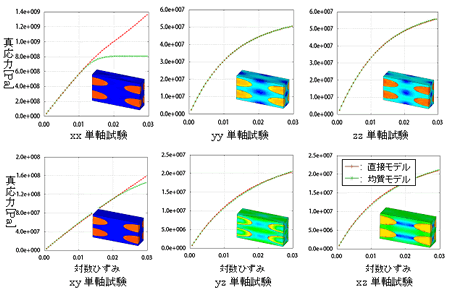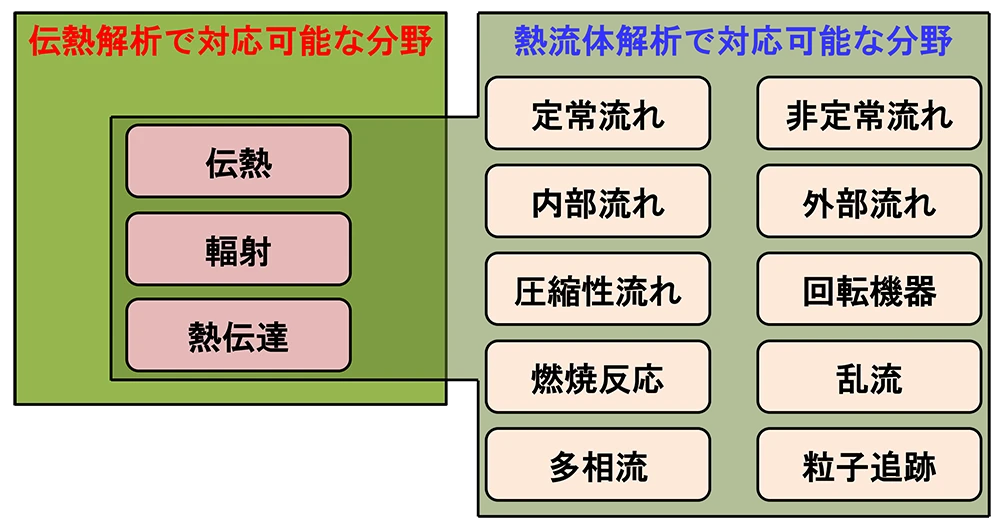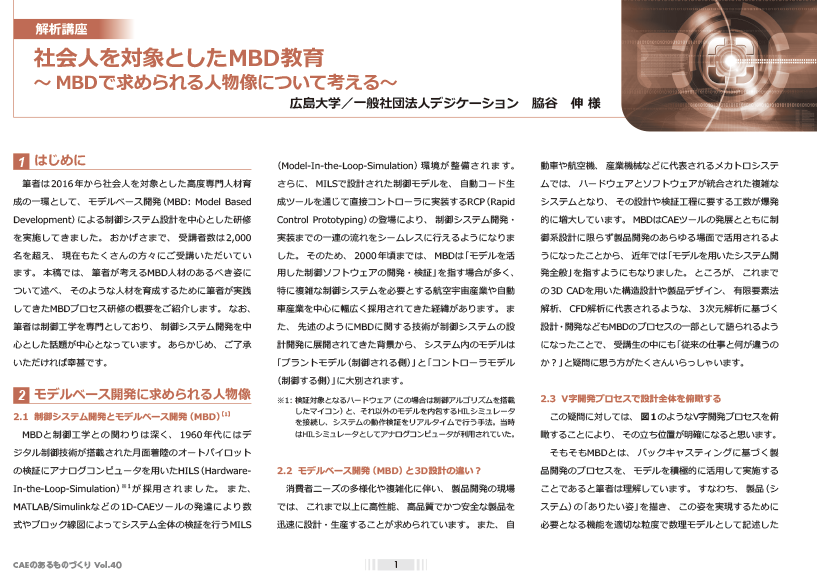Multiscale.Sim Journal Articles Introduction
Material constant identification method of anisotropic elastic-plastic
- Published: May 2010
- Society / Journal Name:Presented paper of 15th Conference on the Japan Society for Computational Engineering and Science
Overview
A very large number of material constitutive laws to represent anisotropic elastic-plastic behavior have been proposed up to now. It is thought that there are roughly two immanent problems when assuming the application to a real problem.
- The selection criteria are unclear for which of the many constitutive laws is appropriate to choose.
- Supposedly even when the appropriate constitutive law is decided, you do not know the identification procedure of material property value s
These problems can be said to be the same as those for the anisotropic potential of the Hill which is implemented in the standard Ansys. This paper introduces the details of the identification procedure of material physical properties value and its application scope for the anisotropic potential of the Hill along with a number of cases.

Figure 1. Analysis model description
Figure 1 shows one analysis example. CMAS is analyzed based on the homogenization method, and assumes that the analysis model continues on infinitely in all directions and are arranged periodically. Materials have been defined as fiber to elastic body, the matrix as elasto-plastic body
Figure 2 shows the comparison of the numerical material test results of a homogeneous one element model using the identified Hill constants and the model in Figure 1 that defines the composite material directly. It means that if the two graphs match, Hill constitutive law is able to correctly represent the actual ph enomena. You can see that the result of the Uniaxial test in xx direction is not able to reproduce accurately the actual behavior in the large strain region. Unlike the characteristics of the other 5 directions, presence of inflection point can be seen in the test result of the directly model in xx direction (red line). In this way, Hill constant has a tendency to degrade accuracy on the characteristics of directions that are not in a similar relationship to the characteristic of strain and stress.

Figure 2: Numerical material test results of the directly model and the homogenized model
Document request
Please contact us.
関連情報
関連する解析事例
MORE関連する資料ダウンロード
MORE-

剥離・接合強度評価ソリューション ~Ansys Workbench Mechanicalで実施できる剥離解析~
-

レーザー集光の高温レンズ歪みを克服するAnsys連携ソリューション
-

周波数応答解析×自動抽出で干渉チェックを高速化
-

直観的な操作で無線/デジタルフィルタの設計・最適化を支援する〜Ansys Nuhertz FilterSolutions〜
-

流体機器設計の新たな一歩
~Ansys Discoveryで加速する設計改革~
-

筐体の冷却性能を構想設計から見える化 (手戻りを削減できる)
~Ansys Discoveryで始める電気筐体製品の設計改革~
-

若手でもすぐに使えるリアルタイム解析 (勘と経験からの脱却)
~Ansys Discoveryによる30名規模メーカーの設計改革~
-

構想設計ですぐにリアルタイム検証 ~解析専任者ゼロでも使いこなせるAnsys Discovery~
~解析専任者ゼロでも使いこなせるAnsys Discovery~
















